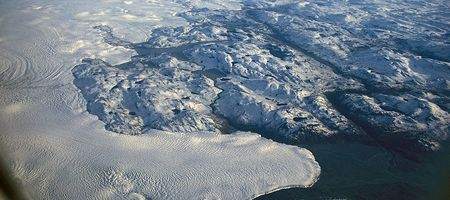The Greenland ice sheet appears more vulnerable to global warming than previously thought, and could disappear altogether if global temperatures rise more than 1.6 degrees Celcius above pre-industrial levels.

Indeed, say scientists from the Potsdam Institute for Climate Impact Research (PIK) and the Universidad Complutense de Madrid, just 0.8 degrees could do it – and we’ve reached that point already.
“The more we exceed the threshold, the faster it melts,” says PIK’s Alexander Robinson. In a business-as-usual scenario of greenhouse-gas emissions, he says, the planet could warm by as much as eight degrees, leading to one fifth of the ice sheet melting within 500 years and a complete loss in 2000 years.
“This is not what one would call a rapid collapse,” says Robinson. “However, compared to what has happened in our planet’s history, it is fast. And we might already be approaching the critical threshold.”
The scientists used a new computer simulation of the Greenland ice sheet and the regional climate which was able to correctly calculate both the observed ice-sheet of today and its evolution over previous glacial cycles – giving the team confidence in its ability to predict future events.
Previous research suggested a threshold in global temperature increase for melting the Greenland ice sheet of 3.1 degrees, with a range of 1.9 to 5.1 degrees. The new study’s best estimate indicates it would take only half as much.
“Our study shows that under certain conditions the melting of the Greenland ice sheet becomes irreversible. This supports the notion that the ice sheet is a tipping element in the Earth system,” says PKI’s Andrey Ganopolski.
“If the global temperature significantly overshoots the threshold for a long time, the ice will continue melting and not regrow – even if the climate would, after many thousand years, return to its preindustrial state.”






